Does Hating the Sagrada Familia Make You Cool?
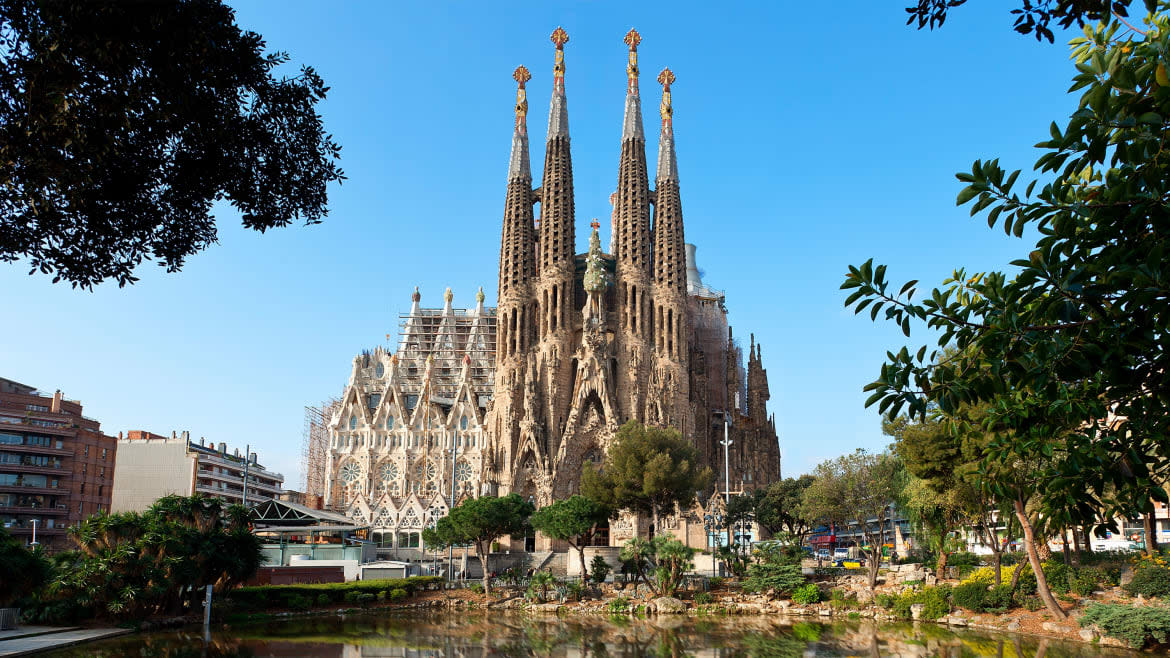
- Oops!Something went wrong.Please try again later.
Some bookish people confess they have never read the Catcher in the Rye; some movie buffs quietly admit they have never seen The Godfather. I am the Hispanophile and Barcelona fan who had never visited the Sagrada Familia.
The basilica of the Holy Family (Basílica i Temple Expiatori de la Sagrada Família, to give it its full name) is the project to which Catalan architect Antoni Gaudí (1852-1926) devoted the last 15 years of his life. To say it’s a popular spot in Barcelona would be an understatement: this is the second most-visited church in Christendom after St Peter’s in Rome and, together with the Prado museum in Madrid and the Alhambra in Granada, a “sight” that habitually tops the bucket lists of travelers in Spain.
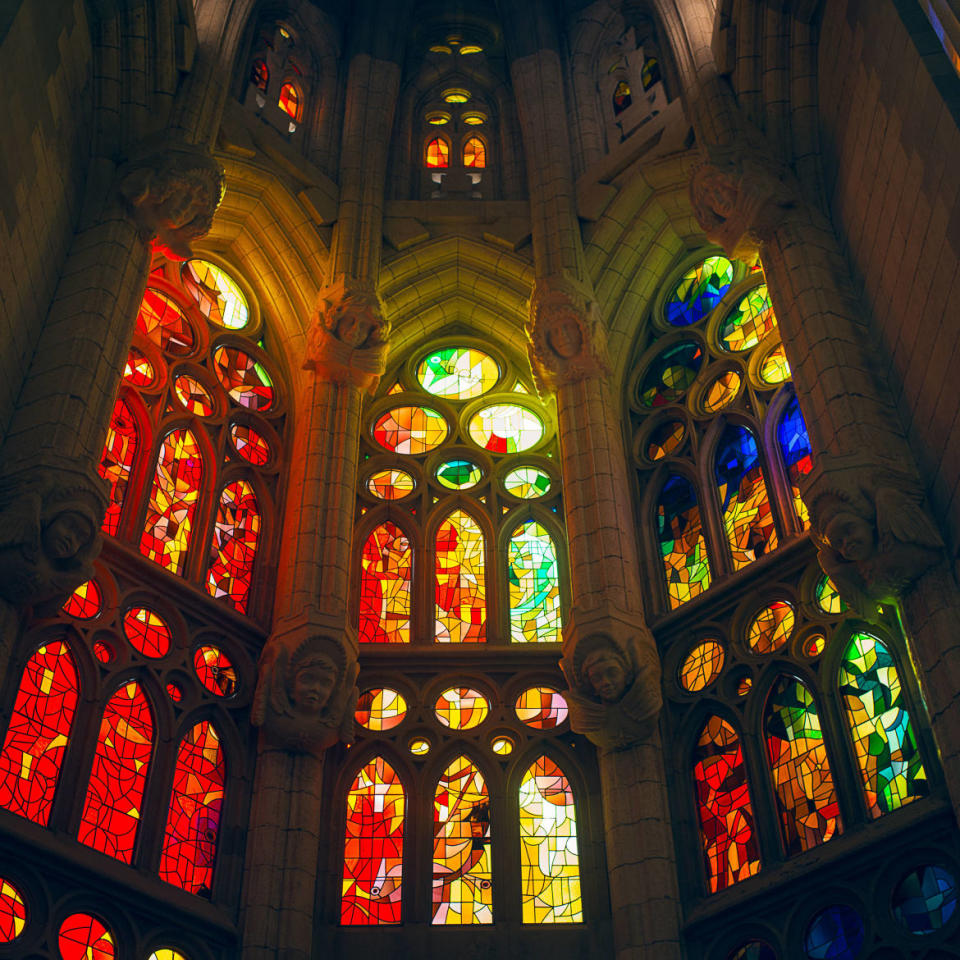
Yet I had been avoiding it all my life. Why? Partly because I was reluctant to join the tourist throng, fearful of being reduced to the level of a humble sightseer rather than the connoisseur of Spanish culture that I imagined myself to be.
And partly because, despite my never having set eyes on it, I had an Opinion about the building. Among my peer group it was tacitly assumed that with the Sagrada Familia somehow Gaudí crossed a red line. If the rest of the stops on the Barcelona Gaudí tour—Casa Milà, Casa Batlló, the Park Güell, et al—were all straight-up masterpieces, the “expiatory temple” was not. On the contrary: it was wildly OTT, borderline vulgar, a behemoth of Catholic kitsch, and one didn’t need to see it to know that. As the years went by it was easier to continue in my ignorance than to set about remedying the situation.
Until a short time ago, when I found myself in Barcelona with a morning to spare and, in an access of open-mindedness, thought: why not now? I booked myself a place on the first English-language tour of the day. The cost: a not inexpensive €33.80 ($38).
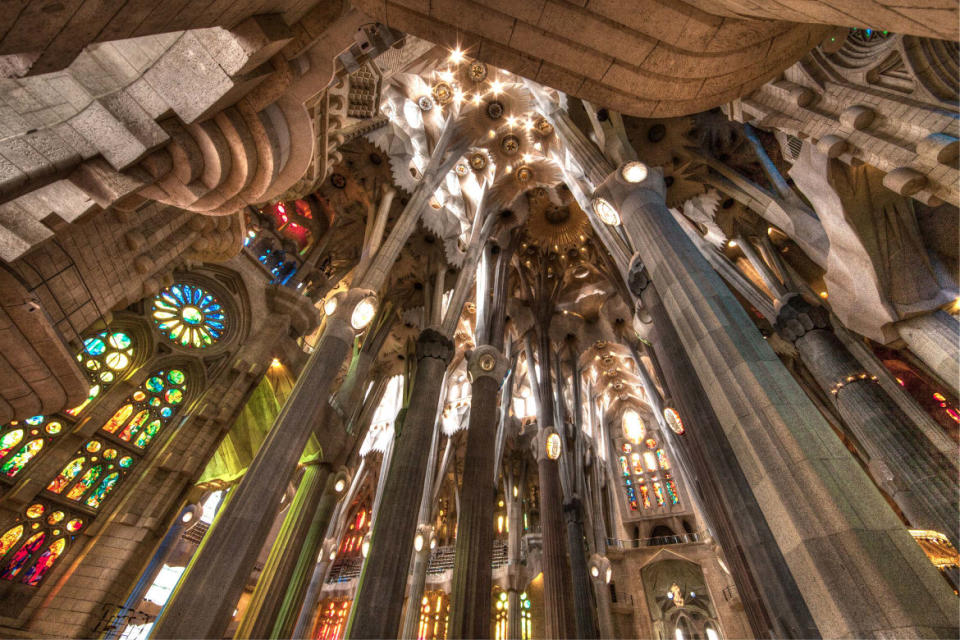
In culture as in politics, it can be sobering to realize your Opinion is shared by only a small minority of the population. On Tripadvisor, no fewer than 129,293 users give the Sagrada Familia a five-star rating. Just 1,132 give it one out of five, and of these negative views the vast majority are complaints about poor customer service or crowding at the site. No more than a handful bring aesthetic criteria to bear. Their comments include: “pastiche!,” “the highest expression of bad taste,” “a tacky vision of paradise,” “it tries to imitate the great Gothic cathedrals but only manages a ridiculous imitation”—and also this devastating seven-word critique: “I prefer the Disney castle in Paris.”
At 9.45 a.m on an unseasonably cold and drizzly day, the square in front of the church is already seething with people. With 15 minutes to spare, I amuse myself watching the ranks of selfie-takers as they pose in front of the church, their smiles turning on and off with light-bulb rapidity. (“Here’s me outside the palace of me,” as rap poet Kae Tempest puts it in Europe is Lost). Among the crowds milling around the entrance there’s excitement: for many of these people this will be a high point of the vacation. “Yay guys! Are y’all ready?” calls one man, to whoops of delight from his family.
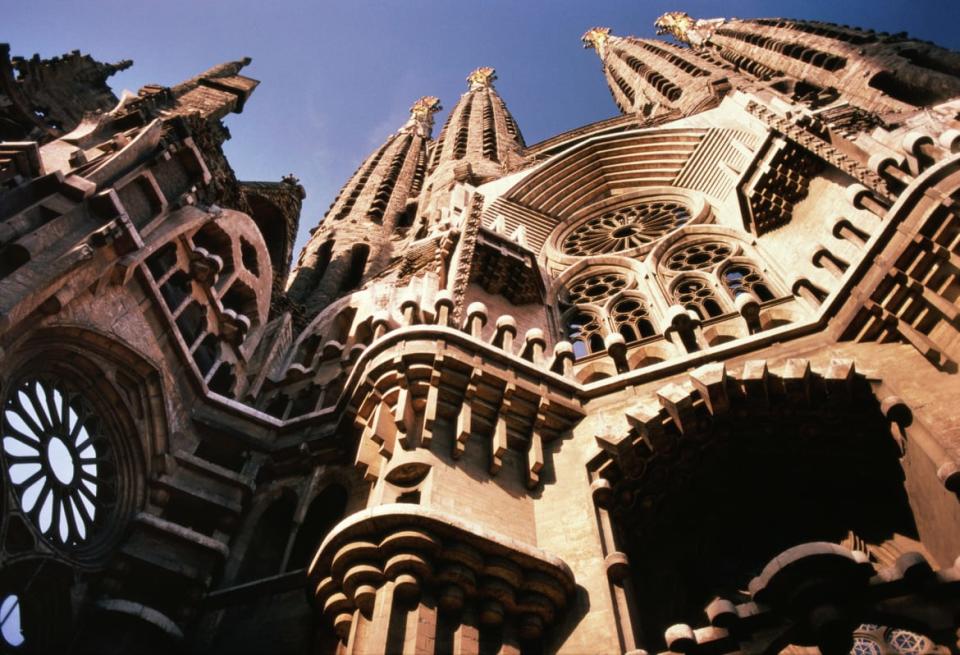
My little group assembles and we identify ourselves—there are folk here from Germany and Austria, Canada, Israel, and the United States. Tour guide Alessia begins her spiel, reminding us that the basilica’s “Nativity” façade and the spire of Saint Barnabas were practically the only parts of the building Gaudí saw in his lifetime. It would be left to other hands to finish what he started—but there was a problem. The architect had been dead for 10 years when, in 1936, anarchist militia set fire to the crypt where his models and sketches were stored. So that much of what we’re looking at is the result of pure conjecture—and this turns out to be a major factor in the controversy surrounding the building.
Even so, I have to admit the sheer scale of the construction is astonishing. Just as in the Gothic cathedrals from which it draws its inspiration, the façade draws your eyes upwards from the base, where sculpted chickens peck around the columns, and into the coruscations of swirling stonework crammed with hallucinatory detail, the stone itself seeming to drip and sag. But already I’m picking up jarring notes. The figures of angels added by Japanese sculptor Etsuro Sotoo in 1987 seem to me cheesy and saccharine, and the multicolored baubles crowning the nave, garish against the smooth gray granite of the newly completed roof.
In recent years work on the Sagrada Familia has gathered speed. The Tower of Mary, eventually to be the second tallest of 18 teetering parabolic spires, reached its final height of 128m in December 2021. If building work finishes as planned in 2026, says Alessia, it would neatly coincide with the 100th anniversary of Gaudí’s death.
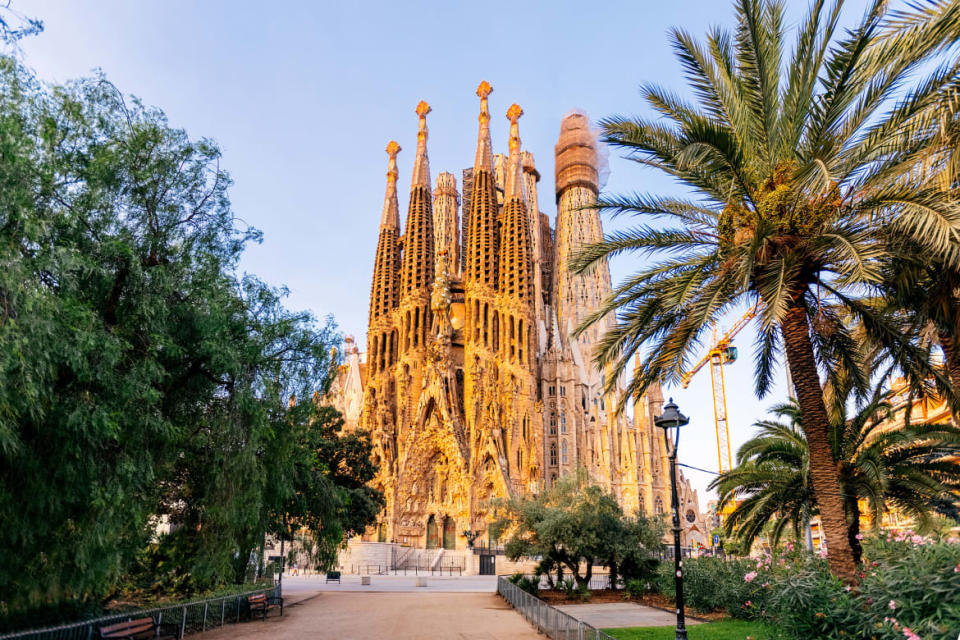
Now she leads us inside. The crowds filling the basilica are quiet, as if struck dumb, craning their necks to see the vaulted roof with its intersecting forms in precision-tooled stone, evoking perhaps a canopy of soaring palms. A fugue by Bach plays on the organ, echoing superbly around the walls. The vast panels of stained glass (by Joan Vila-Grau) bring in a flood of rainbow light; the effect is genuinely stunning.
“What do you think of the interior?” asks our guide.
“Big,” “beautiful,” “calm,” some of us mumble.
Indeed it is all of those things—but I have nagging doubts. The four medallions placed high on the central columns, each dedicated to one of the four Evangelists, look to my eyes cheap and, yes, gaudy, like fridge magnets in a souvenir store. The tiled floor is as drab and workaday as a municipal post office.
More than one critic has compared the nave’s retro-futuristic grandeur to the set of a sci-fi movie, and it’s true: the location scouts for Denis Villeneuve’s Dune missed a trick. To cap it all, high above the main entrance stands a highly stylised, hooded figure in blackened bronze, a 1989 work by sculptor Josep Maria Subirachs. “If you think he looks a little like Darth Vader, that’s totally okay,” says Alessia sweetly. (In fact the figure represents Saint George, patron saint of Catalunya.)
We exit the building to gaze at the “Passion” façade, whose large-scale sculptural figures, also by Subirachs, were vilified by art critics when first unveiled in 1987. I can see the mise en scène is incongruous, with no attempt made to integrate these futuristic space-warriors into the rest of the fantastical façade. How much this matters is a moot point. Gaudí himself recognised that, as with the cathedrals of the past, he would not be the only architect to work on his great final project. (There have been seven to date.) But conventional “good taste” prefers coherence in art, dislikes anachronism, and tends to balk at stylistic mashups.
Certainly the Sagrada Familia has always provoked strong reactions both for and against. For its harshest detractors, especially among the Catalan architectural community, the newest phases of the building represent a betrayal of Gaudí’s uniquely personal vision. For them the fundamental issue is the wisdom of pushing forward with a projection of “what Gaudí would have done” instead of leaving the shell as a romantic ruin. In 1956 an international group of artists and architects including Le Corbusier, Joan Miró, Antoni Tàpies, and Nikolaus Pevsner, signed an open letter arguing that the Temple should be left in its raw, unfinished state. More recently critics have complained about the “sub-standard finishes,” the “horrible flooring,” the “soulless” interior. “Gaudí is impossible to reproduce. What they have done is create a huge kitsch object to attract the tourist masses,” declared designer and architect Beth Galí.
Meanwhile the tourist masses have their own take on things. I speak to Klaus and Nina, who hail from Cologne, Germany, where the cathedral is a pinnacle of the Gothic style that Gaudí adored. The bar is high, then, but for them the Sagrada Familia has more than lived up to expectations.
“We knew this would be a special part of our holiday, but we didn’t expect it would be this special,” smiles Nina. “It’s really surprising, quite amazing. What I love most is that it’s completely different from a normal church.”
Benjamin, from Israel, is thoughtful in his enthusiasm. “It really makes me feel Gaudí’s connection with nature, which is not the same as a religious feeling. It’s not overwhelming, it’s not excessive—it’s just enough,” he says.
So who’s right: the metropolitan elite, the snobbish arbiters of taste, or the basket of deplorables?
The experts may wring their hands, but of course their disapproval counts for nothing in the face of a massive popular vote in favor. Perhaps the best way of reconciling such radically opposing views is to regard the building as a magnificent folly, a gigantic piece of artistic license whose very incoherence is worth cherishing. Or maybe Pasqual Maragall, mayor of Barcelona during the city’s triumphant Olympic years, is right when he says the Sagrada Familia is more important as a symbol of collective endeavor, and of Barcelona itself, than as a physical structure.
From behind a makeshift fence at the rear of the building comes the roar of piledrivers; plumes of gray dust are carried away on a cold wind. Cranes swing in the sky above the towers.
I head for the Metro station feeling chastened—still not entirely convinced by the Sagrada Familia, but determined to try and stop prejudice clouding my views of people and places in future. There’s no accounting for taste. Equally, there’s no sense in clinging to received opinions.
Get the Daily Beast's biggest scoops and scandals delivered right to your inbox. Sign up now.
Stay informed and gain unlimited access to the Daily Beast's unmatched reporting. Subscribe now.

